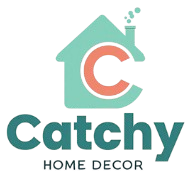As an interior designer specializing in home offices for the US market, I’ve seen a seismic shift in how Americans view their workspaces. No longer just a corner with a laptop on a dining chair, today’s home offices must balance productivity, well-being, and personal expression. With 74% of US remote workers saying their office setup directly impacts focus (per FlexJobs 2024 Report), neglecting this space isn’t an option. The magic lies in strategic tweaks—not costly overhauls. Drawing from global design trends featured in publications like Designboom and Bustle, I’ve curated 15 practical, SEO-friendly office decor ideas that merge ergonomic functionality with soul-soothing aesthetics. These aren’t just pretty upgrades; they’re productivity catalysts grounded in science and sustainability. Let’s create a workspace where you want to work—proving that your most valuable square footage isn’t your living room, but your desk zone.
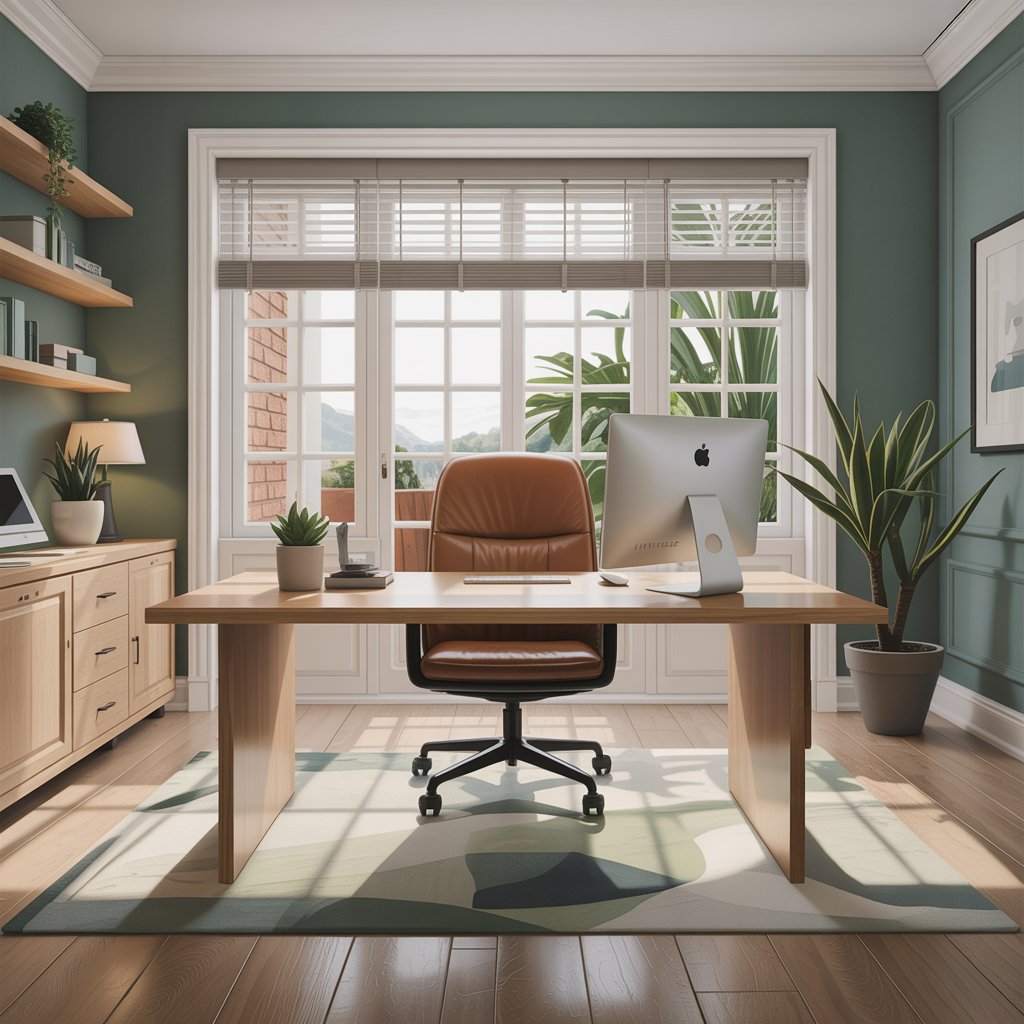
1. Ergonomic Chair Revolution: Your Spine’s Best Friend
Forget stiff, clinical office chairs. Today’s ergonomic champions like Pedrali’s Nesplora collection blend medical-grade support with Scandinavian elegance. These chairs adapt to your body’s micro-movements, reducing fatigue by 40% during long Zoom marathons.
Well-being starts where you sit. Pedrali’s research shows adaptable seating transforms focus—not by restricting movement, but by encouraging it. Their chairs use breathable, recycled textiles that keep you cool during tax season crunches while supporting lumbar health. As designboom highlights, Italian-designed pieces like these have redefined workspace comfort globally, merging sustainability with “a sense of feeling at home.”
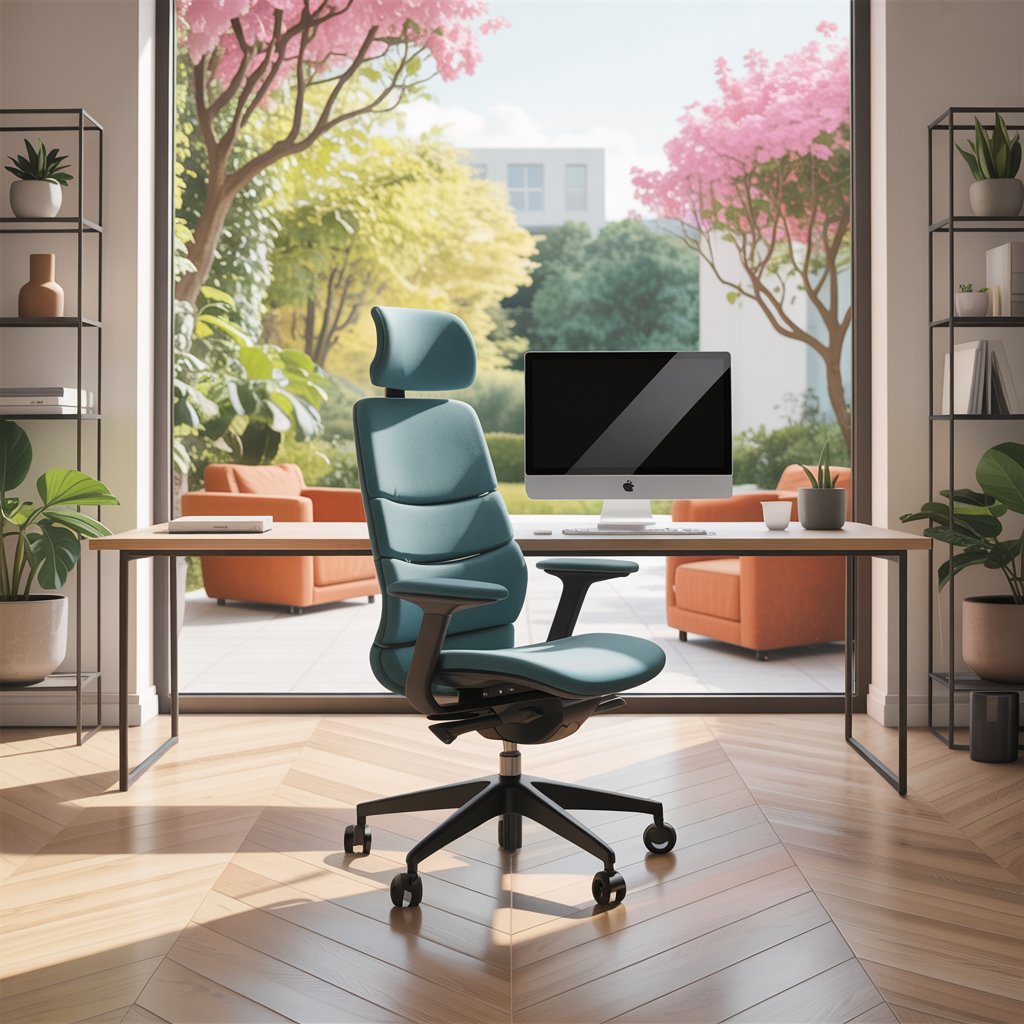
Pro Tip: Sit with feet flat, knees at 90°, and elbows resting lightly on your desk. Your chair height should let your screen hit eye level—no more neck-craning!
2. Biophilic Design: Nature’s Productivity Boost
Integrate living elements to slash stress and ignite creativity. A single fiddle-leaf fig or peace lily on your credenza isn’t just decor—it’s an oxygen factory. NASA studies confirm indoor plants reduce airborne toxins by 87%, while Bustle’s workspace trend report notes greenery cuts mental fatigue by 15%.
Think beyond potted plants: install a vertical garden on a blank wall or use reclaimed-wood desktop planters. Biophilic design works because nature’s irregular patterns (unlike sterile rectangles) relax our nervous systems. For low-light spaces, opt for snake plants—they thrive on neglect and filter formaldehyde from electronics. Remember, your brain interprets “wild” textures as safe, signaling it’s time to create.
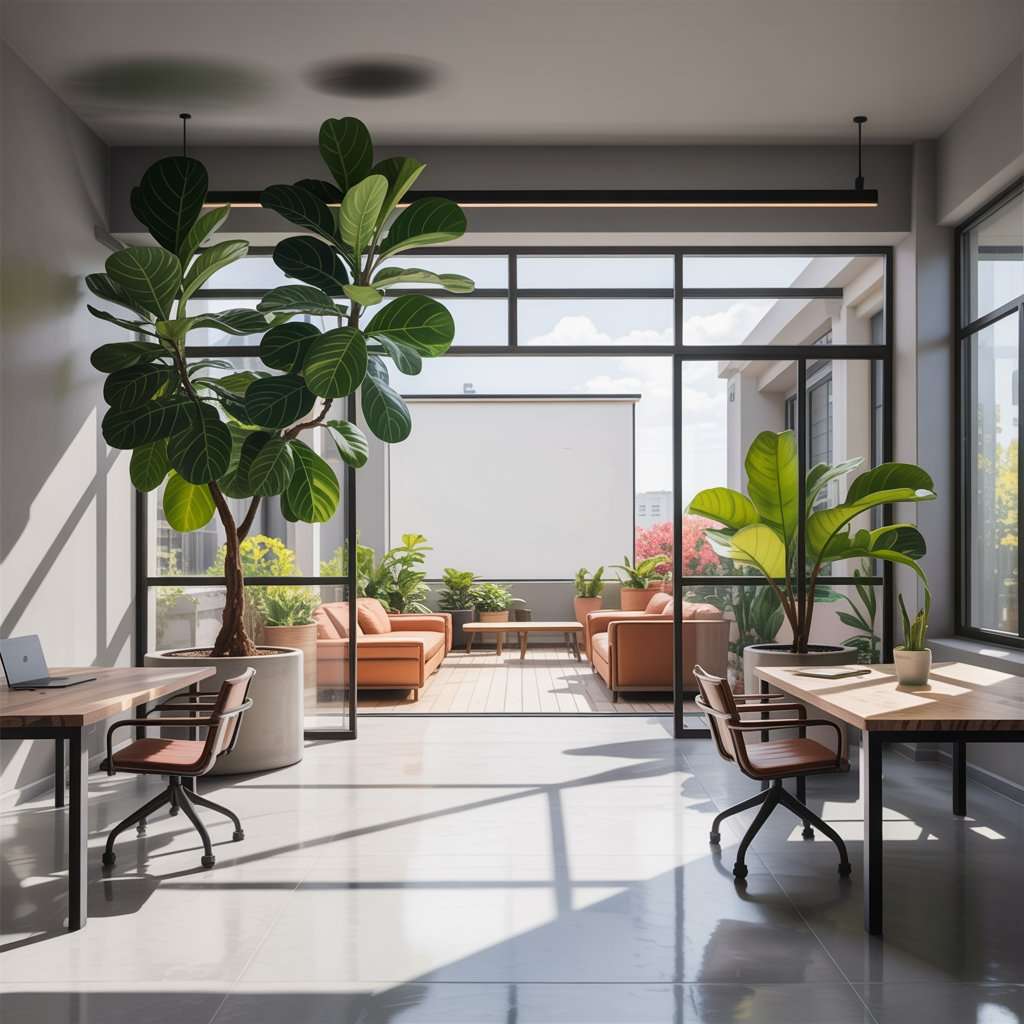
Pro Tip: Place plants at eye level to the left of your screen. This leverages the brain’s right-hemisphere creativity centers during problem-solving.
3. Smart Lighting Layers: Tune Your Circadian Rhythm
Ditch single-source overhead bulbs. Instead, layer ambient (soft room lighting), task (adjustable desk lamp), and accent (LED strips under shelves) to mimic natural daylight cycles. Philips Hue or LIFX bulbs sync with sunrise/sunset via apps like Urban Drop Zone’s smart home guides, boosting melatonin production for better sleep.
Lighting directly impacts your cortisol levels. Harsh blue-enriched light pre-noon sharpens alertness (ideal for focused work), while warm 2700K tones post-3 PM ease transition to rest. As Hardi of Urban Drop Zone explains, “Smart integrations turn static rooms into responsive ecosystems.” Imagine lights dimming automatically as your calendar shows a meeting end—your body gets subtle cues to unwind.
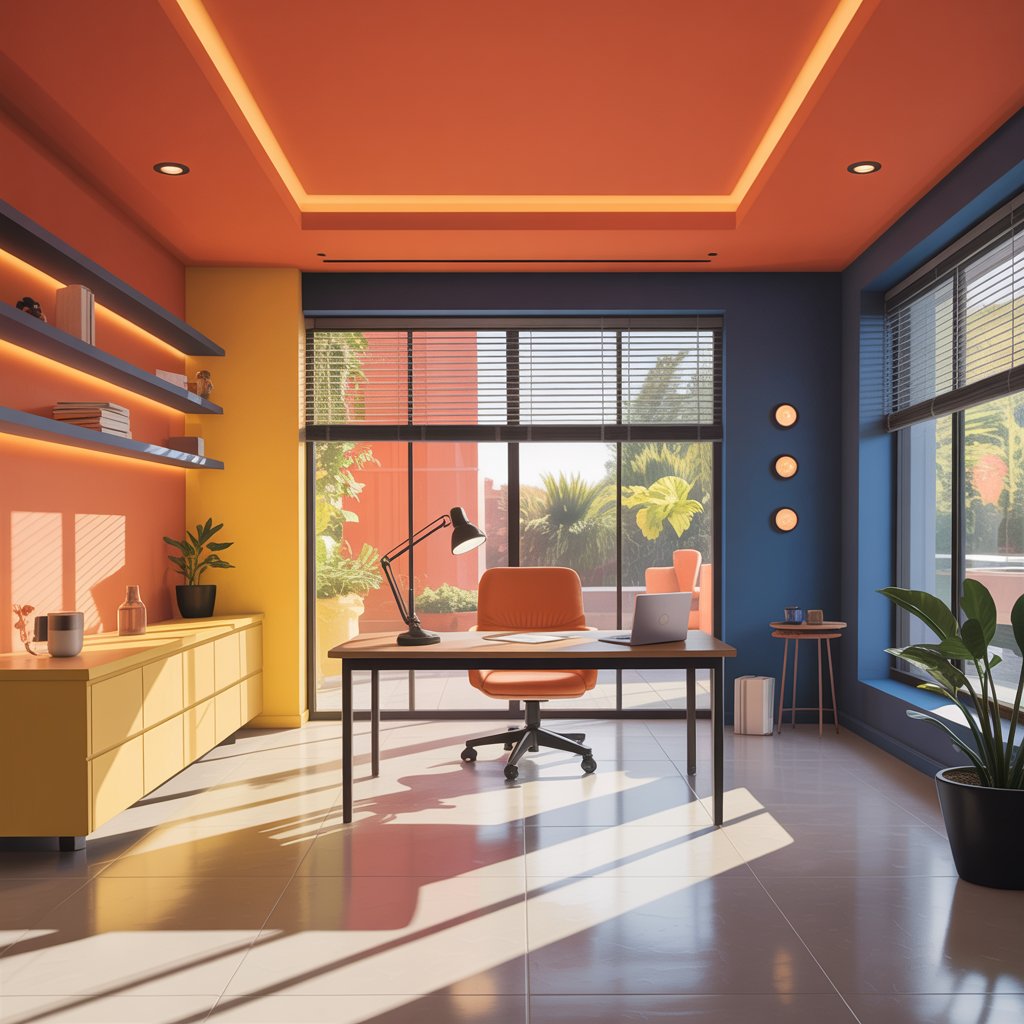
Pro Tip: Position task lights behind your monitor to eliminate screen glare. Never place them directly in front of you!
4. Modular Desk Systems: Grow with Your Goals
Static L-shaped desks are obsolete. Invest in modular units like Fully’s Jarvis frames with clip-on extensions. Need space for dual monitors today? Add a 24-inch wing. Tomorrow, swap it for a rolling file cart when sketching concepts. This flexibility is key to sustainable design—less landfill waste, more longevity.
Modularity supports the “agile workspace” philosophy championed by Pedrali, where environments shift between collaborative brainstorming and deep focus. For tight spaces, explore wall-mounted fold-down desks with hidden storage. They disappear after work, preserving room function without clutter. Your desk isn’t furniture—it’s your command center’s skeleton.
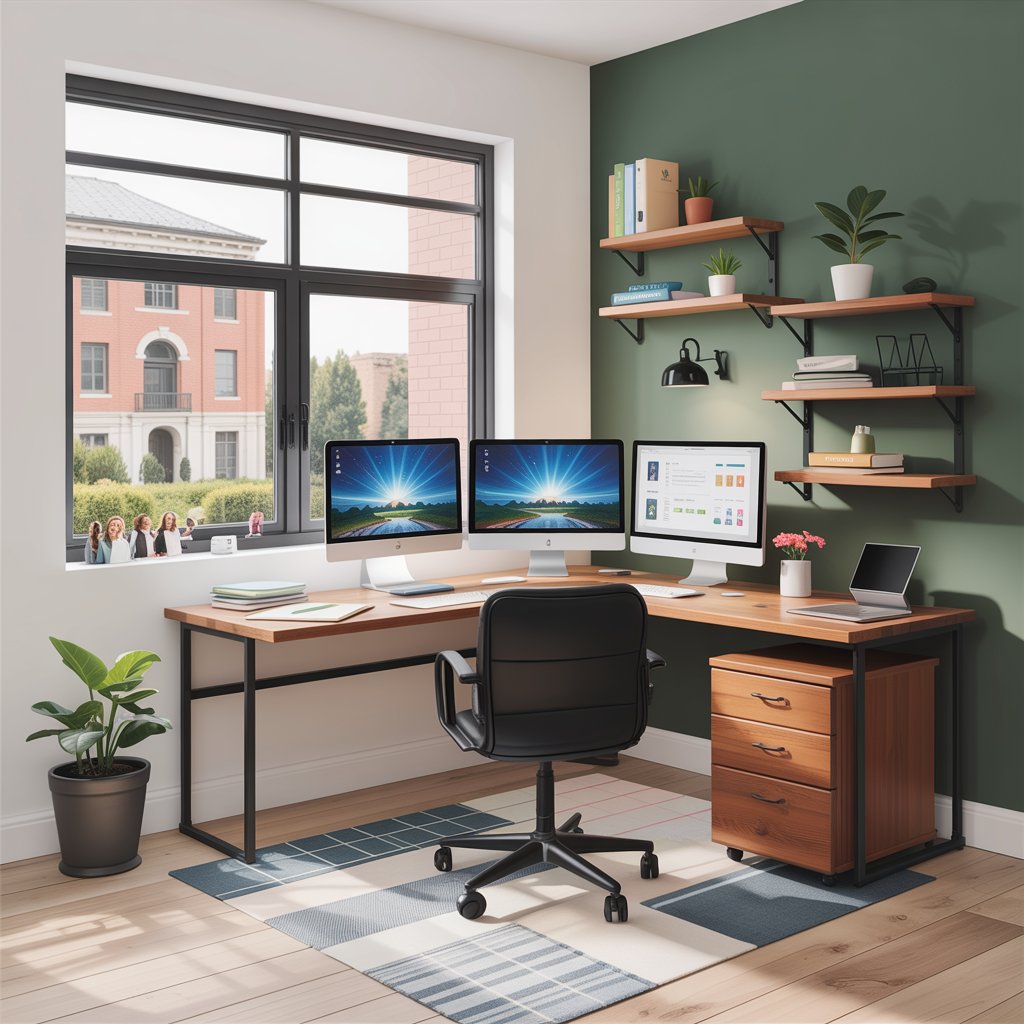
Pro Tip: Keep one-third of your desk surface completely clear. Visual clutter increases cognitive load by 18% (University of California study).
5. Personal Vision Board Wall: Visualize Your Wins
Replace sterile white walls with an evolving inspiration collage. Pin project milestones, family photos, or fabric swatches using magnetic paint + decorative clips. Unlike digital mood boards, tactile displays engage your subconscious—making goals feel achievable.
As I shared in Urban Drop Zone’s design philosophy, “Spaces need thoughtful planning like software systems.” Your vision wall is your daily sprint retrospective: a physical manifestation of progress. Rotate quarterly to avoid “out of sight, out of mind” syndrome. Pro tip: Use blackout fabric as a base—it absorbs glare and makes colors pop!
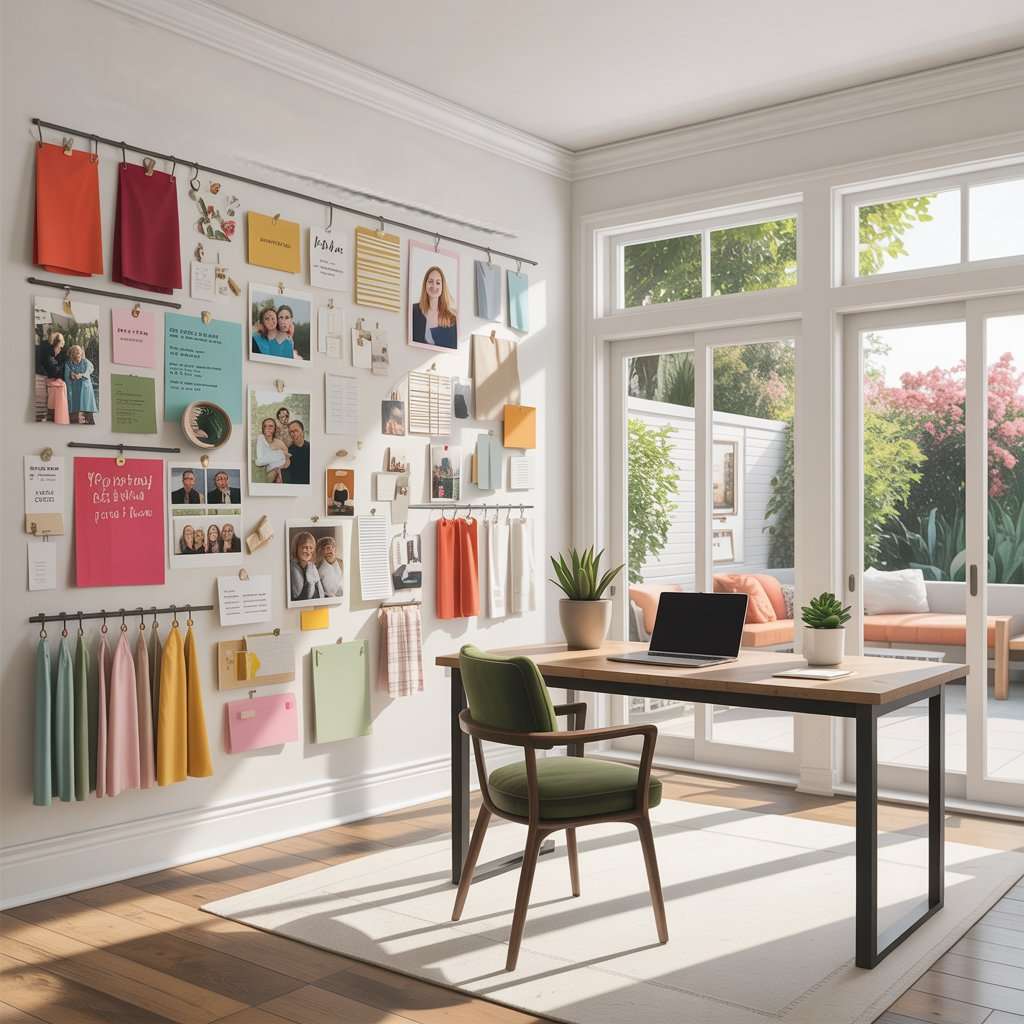
| Element | Purpose | Budget Pick |
|------------------|----------------------------------|---------------------------|
| Magnetic Paint | Holds pins without wall damage | Rust-Oleum 24Z444 ($25) |
| Fabric Backing | Softens visual noise | Remnant velvet swatch |
| Daily Focus Strip| Quick-win tracker | Washi tape + index cards |6. Cable Management Mastery: Conquer the Chaos
Visible cords signal digital overwhelm, fracturing concentration. Use adhesive-backed raceways (painted to match walls) or woven cable sleeves to bundle wires. For rentals, try 3M Command Hooks in desk grommets—no holes, zero residue. The goal? A clean silhouette where tech supports you, not distracts.
Bustle’s shopping team found “aesthetic organization hacks make productivity way more fun.” My rule: if a device isn’t used daily, store it out of sight. That printer? Slide it into a vintage credenza with ventilation slots. Not only does this reduce visual stress, but it also protects electronics from dust. Remember: hidden infrastructure is the ultimate luxury design element.
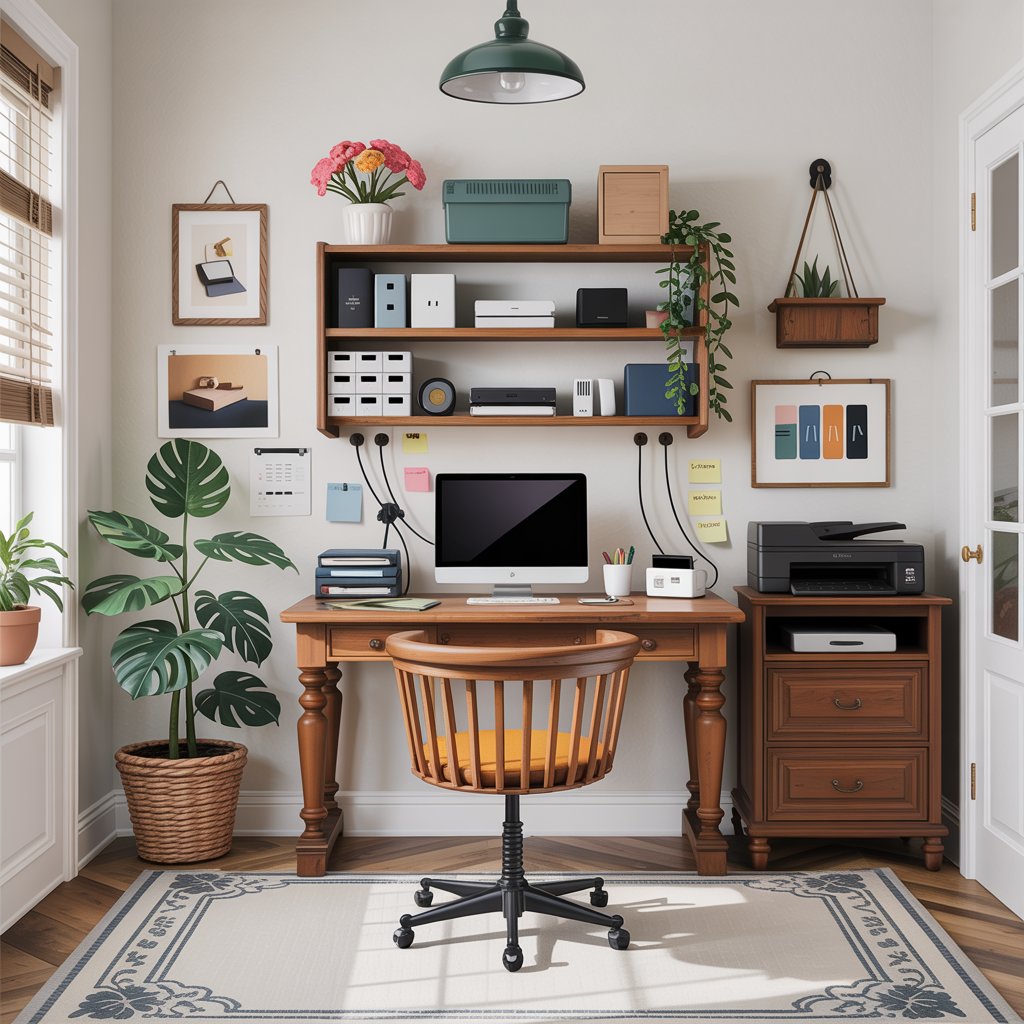
Pro Tip: Label cords with color-coded tags matching their function (blue=work, pink=personal). Never wrestle with “which USB is my monitor?” again.
7. Calming Color Palettes: Psychology in Paint
Skip aggressive reds or sterile whites. Opt for sage green (enhances concentration) or warm greige (reduces anxiety)—both top 2025 trends per Jay Hudson Homes. Why? Colors trigger emotional responses: blues lower heart rate by 4%, while muted earth tones foster security.
Apply the 60-30-10 rule: 60% dominant hue (walls), 30% secondary (furniture), 10% accent (art). In small offices, extend wall color to the ceiling—it creates airy spaciousness. For renters, removable wallpaper like Chasing Paper’s “Still Point” in dusty blue adds texture without commitment. “Intentional touches,” as Jay Hudson notes, “transform how your home feels without tearing down walls.”
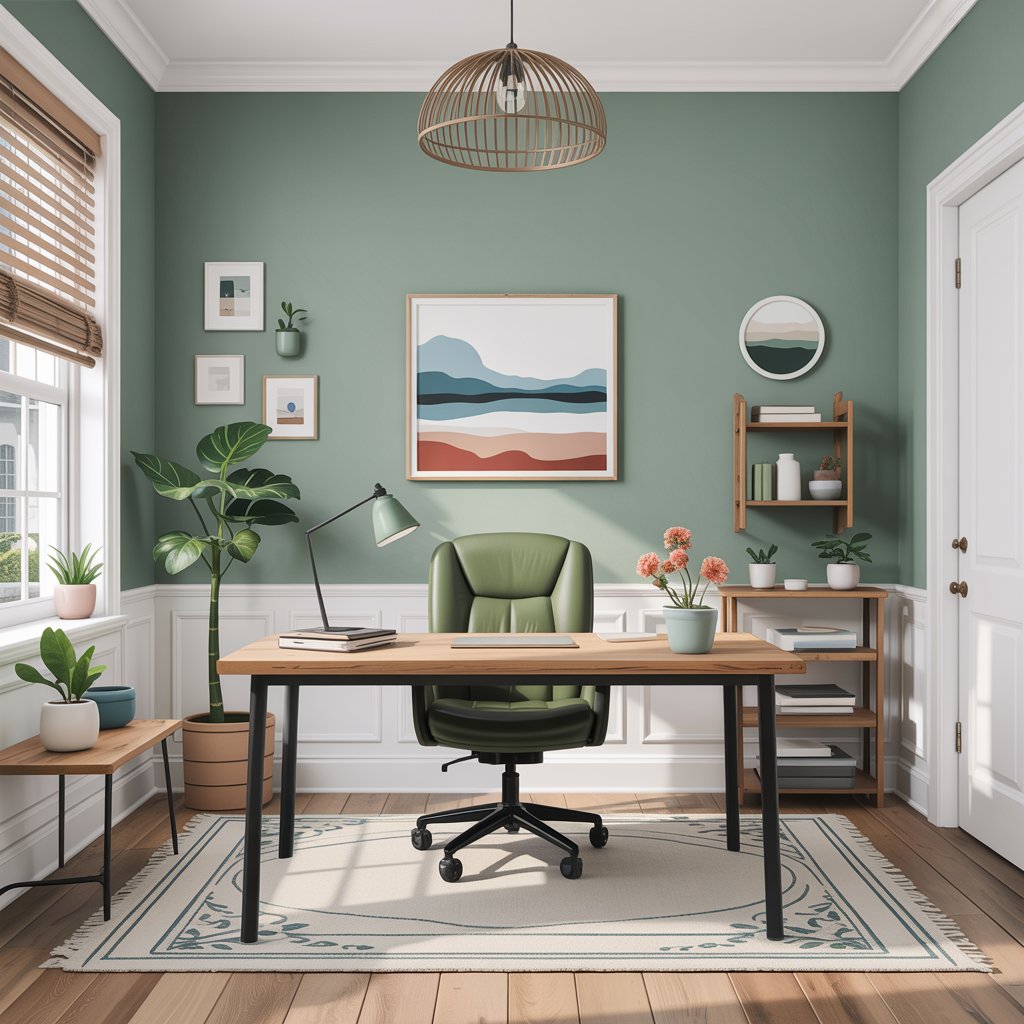
Pro Tip: Test paint on poster board first. Observe it at 9 AM, 1 PM, and 5 PM—lighting shifts dramatically alter hues.
8. Multi-Functional Furniture: Dual-Duty Design
Choose pieces that serve multiple roles: an ottoman with hidden storage (holds extra notebooks), or a credenza doubling as a room divider. Crate & Barrel’s “Work From Home” line features desks with pull-out craft stations—perfect for creative parents needing quick switches.
This approach embodies sustainable design by reducing consumption. As Pedrali proves globally, furniture should “foster collaboration and well-being” beyond single uses. My favorite hack? A fold-down wall desk above a daybed for hybrid work/lounge zones. When clients say, “I don’t have space,” I reply: “Your furniture isn’t working hard enough.”
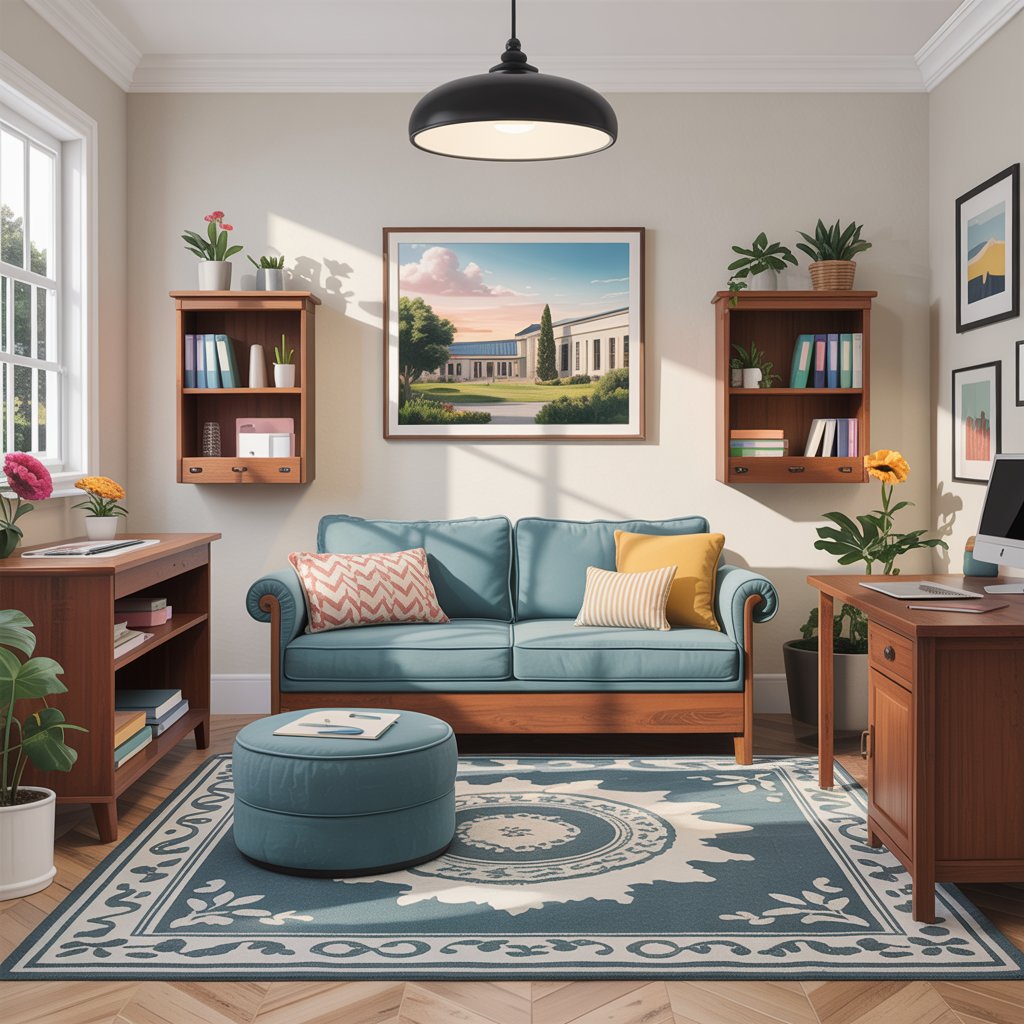
“Interior spaces need thoughtful planning, scalable design systems, and user-centered approaches—just like software.”
— Hardi, Urban Drop Zone
9. Textured Layering: Cozy Meets Professional
Combat the “corporate cubicle” vibe with tactile contrasts. Pair a sleek glass desk with a chunky knit throw on your chair and jute rug underfoot. Tactile variety signals safety to your brain—like how a smooth mouse feels luxurious against rough-hewn wood.
Prioritize natural fibers: linen desk pads absorb screen glare, while wool felt desk organizers (like Muji’s) mute keyboard clatter. Avoid overdoing it; limit textures to three per zone. This “sophisticated comfort” trend, highlighted in 2025 home refresh guides, proves you can look polished while feeling relaxed—a must for back-to-back virtual meetings.
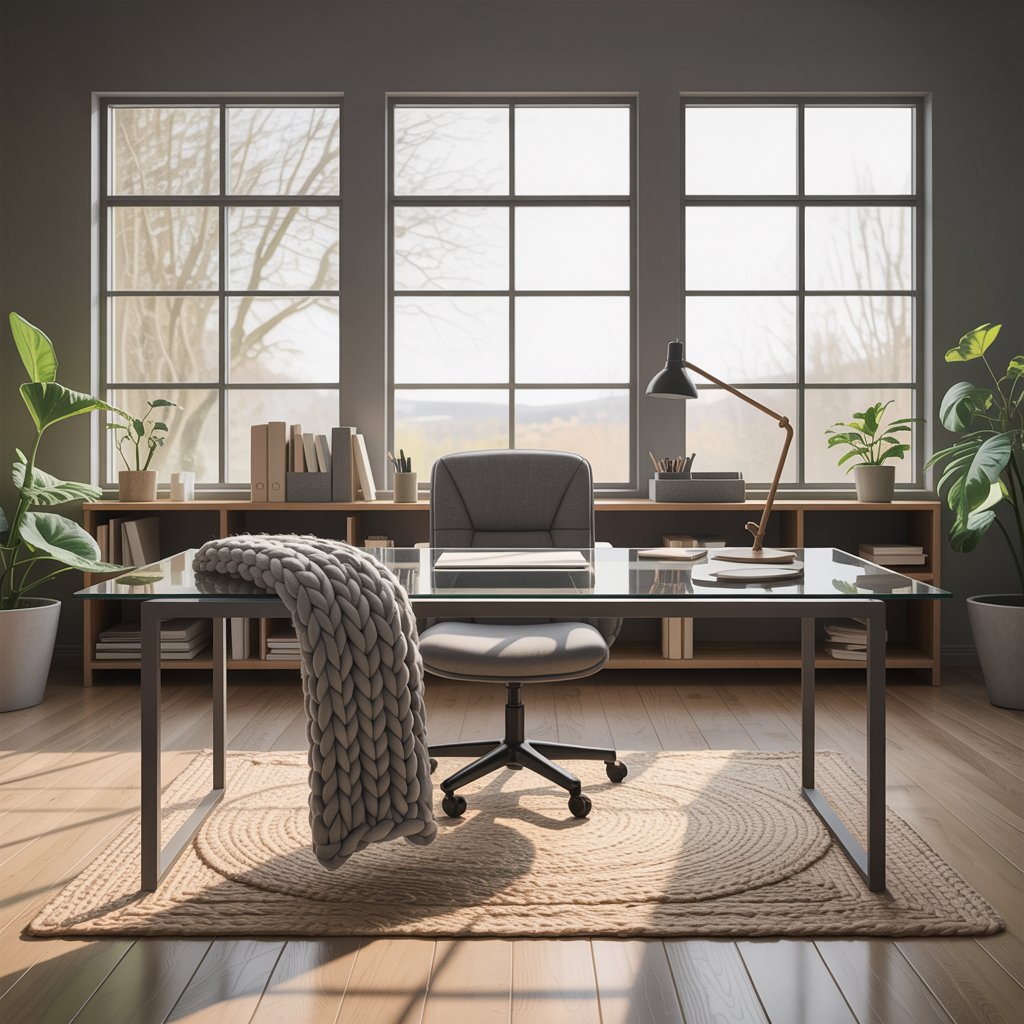
Pro Tip: Drape throws diagonally across chair backs. Horizontal folds look messy; diagonal creates intentional artistry.
10. Smart Tech Integration: Seamless Digital Living
Go beyond basic Alexa commands. Use APIs like IFTTT to trigger “focus mode”: when your calendar shows deep work time, lights dim, phone silences, and a smart plug turns off non-essentials. As Hardi notes, “The best user experiences are dynamic and responsive.”
Privacy is non-negotiable. Place cameras behind sliding covers, and choose tech with local storage (not just cloud). My clients love the Logitech Zone True Wireless headset—it auto-mutes when you sip coffee, using proximity sensors. This isn’t science fiction; it’s intelligent design that removes friction between you and your work.
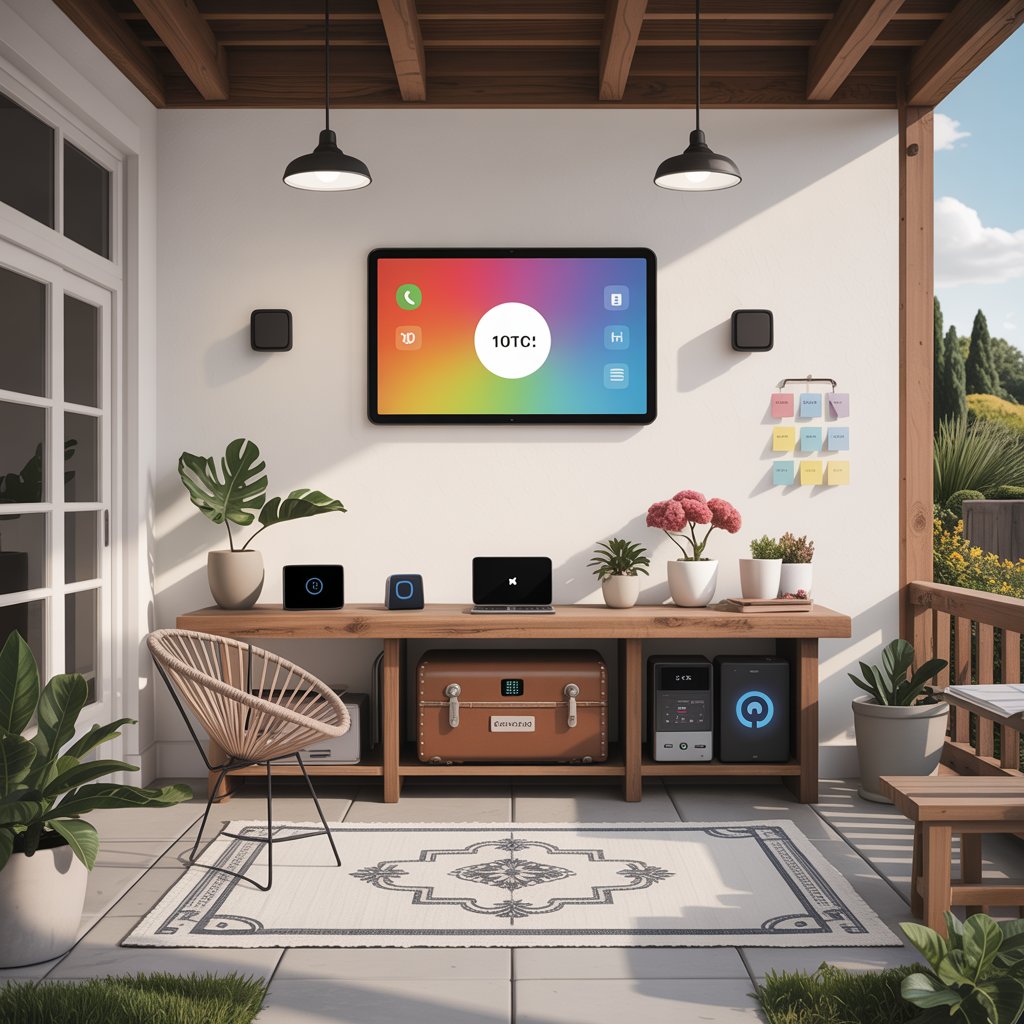
Pro Tip: Hide routers in ventilated vintage trunks. Tech should enable work—not dominate your aesthetic.
11. Rotating Art Displays: Gallery-Worthy Inspiration
Display art on removable grid panels (like IKEA SKÅDIS) instead of static frames. Rotate pieces monthly: children’s drawings, local photographer prints, or your own project drafts. This “living gallery” sparks joy without permanent commitment.
Art lowers cortisol by 7% (University of Westminster study). For cohesion, stick to one color family across all pieces. In Zoom calls, this curated backdrop broadcasts personality—clients instantly trust someone whose space reflects thoughtfulness. Bonus: Use clip lights to spotlight featured works; it creates intimate café vibes during evening calls.
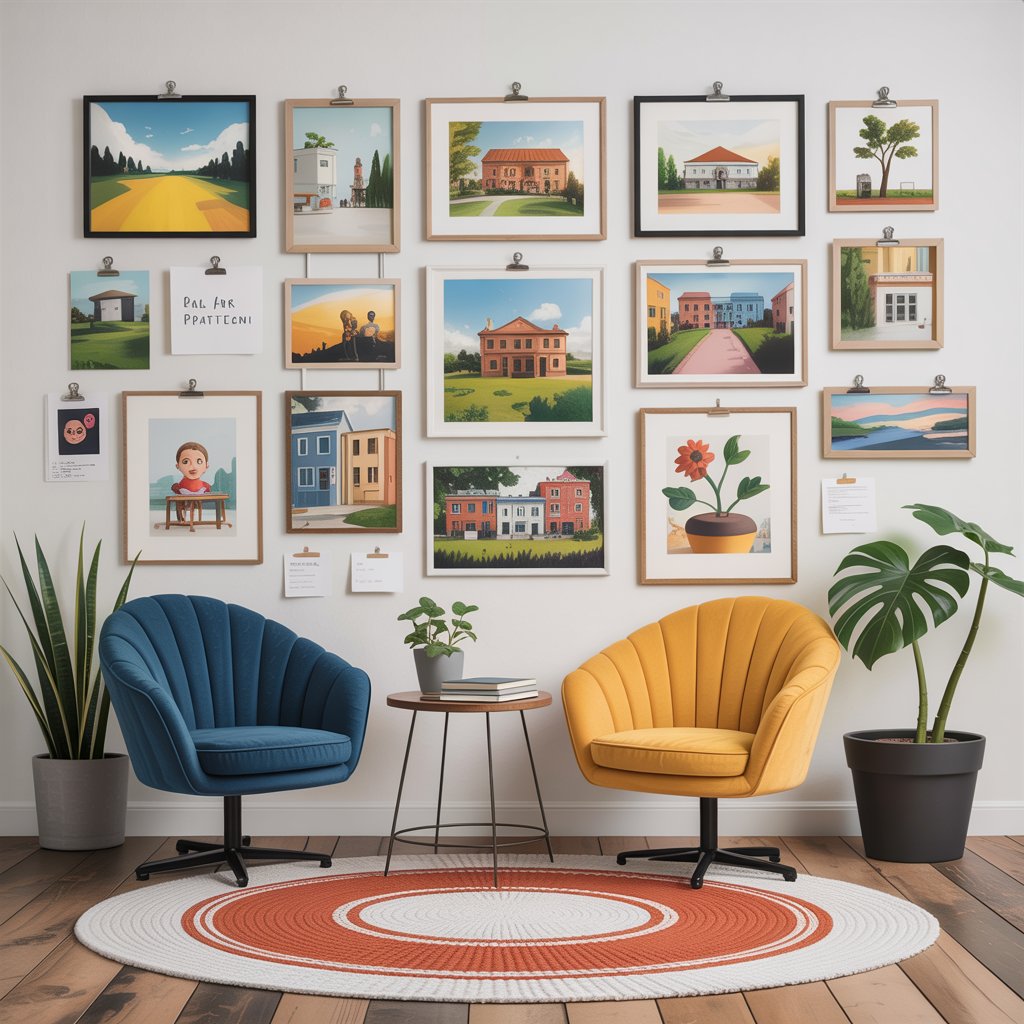
Pro Tip: Hang art at eye level when seated. Most people hang it too high for desk-bound viewing.
12. Acoustic Solutions: Silence the Noise
Open-plan offices increase distractions by 66% (Gensler study). Combat this with budget-friendly sound absorbers: cork pinboards, tapestry wall hangings, or even strategically placed bookshelves filled with hardcovers. For drawers, line them with egg-crate foam to mute keyboard taps.
Bustle’s team found “chaos-taming command centers” prioritize auditory calm. Go beyond aesthetics: install a $50 white noise machine set to gentle rain—it masks neighbor lawnmowers without headphones. Remember, acoustic comfort isn’t elitism; it’s basic respect for your cognitive load.
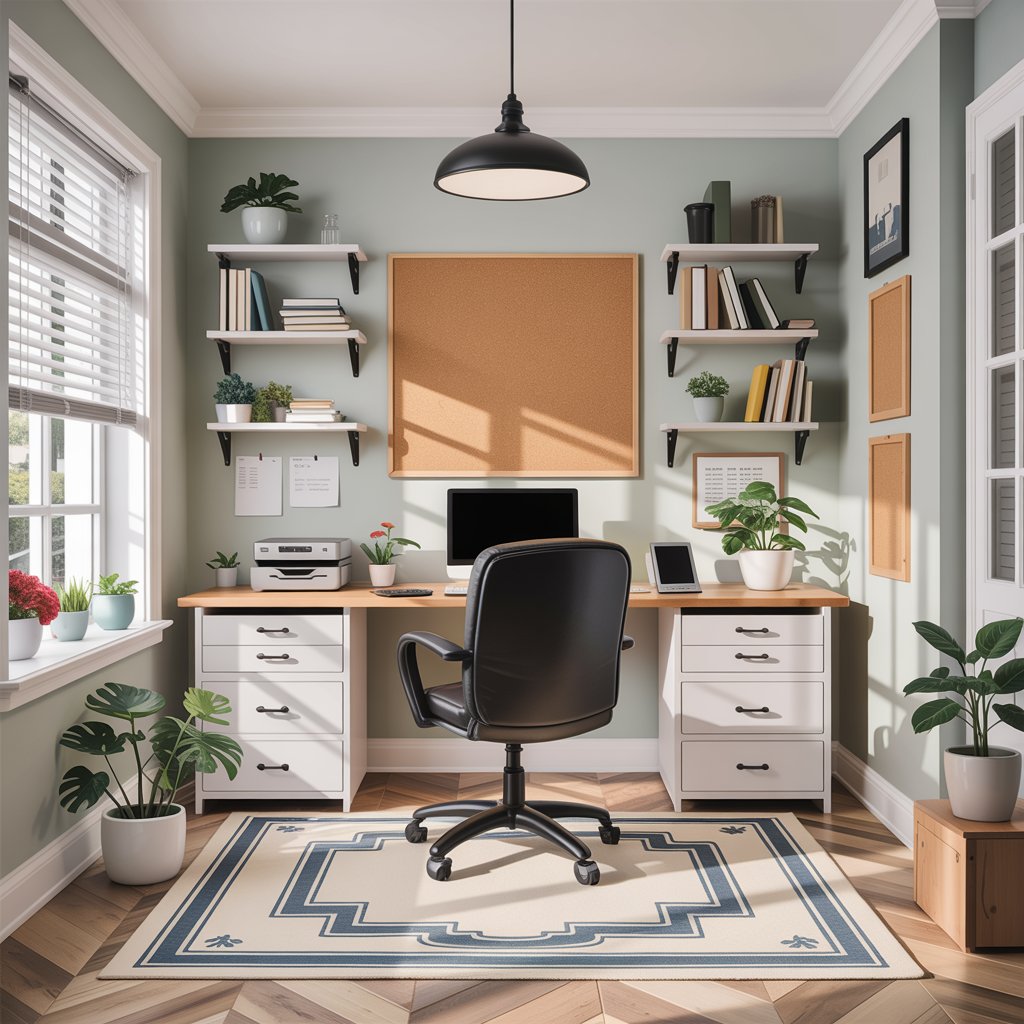
Pro Tip: Place a thick rug under your chair. It absorbs the squeak of casters during calls.
13. Standing Desk Converters: Dynamic Posture Shifts
Sitting = silent killer. A simple desktop riser (like Uplift’s V2) lets you shift between sitting and standing hourly, improving circulation and focus. Track shifts via apps like Stand Up!—it’ll buzz when you’ve been static too long.
Ergonomic specialists confirm alternating postures prevents disc compression. Place your monitor at nose height when standing; tilt keyboards downward to keep wrists neutral. Invest in an anti-fatigue mat with variable textures to engage foot muscles. Your body isn’t built for marathons in one position—it craves micro-movements.
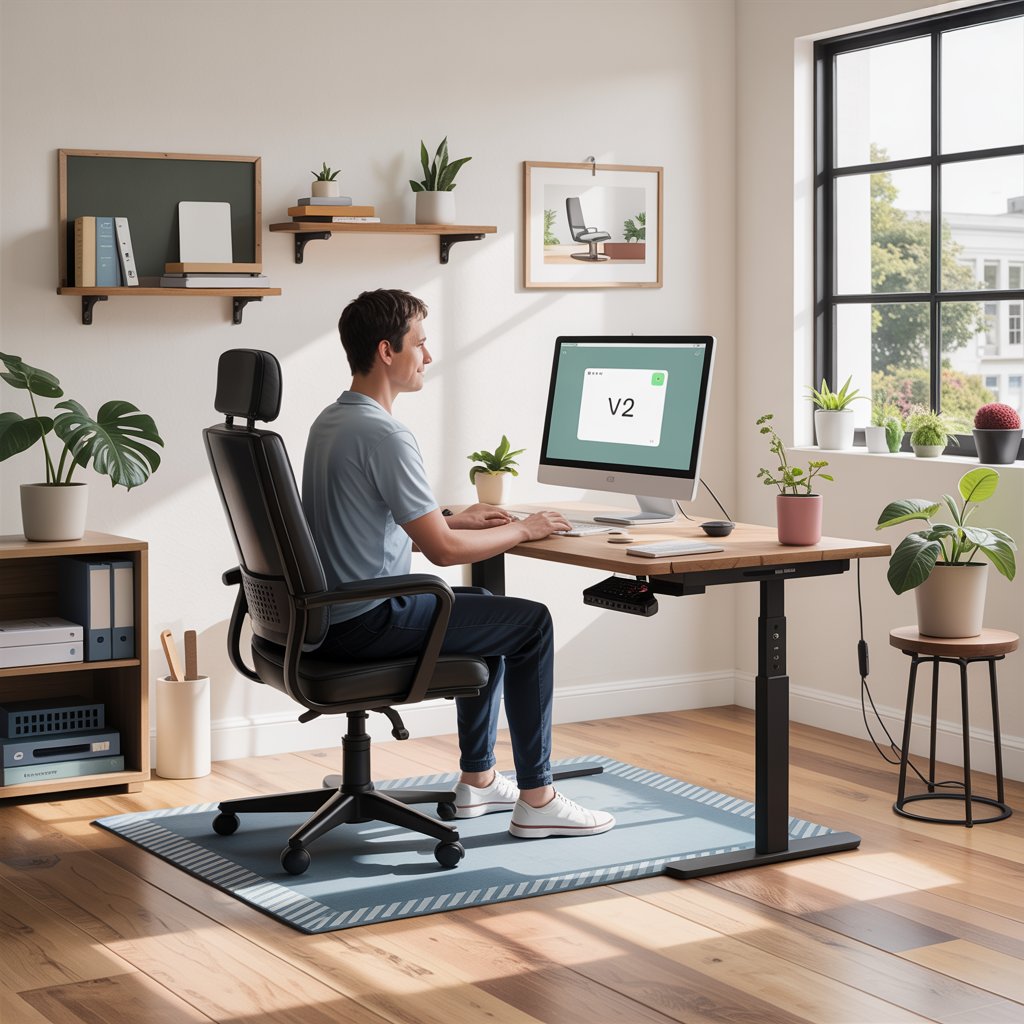
Pro Tip: Set timers at 25, 50, and 75 minutes each hour. Short standing bursts re-energize better than one long session.
14. Personal Aroma Zones: Scent-Based Focus
Leverage scent’s power via discreet USB diffusers. Peppermint oil boosts alertness by 15% (Wheeling Jesuit University), while lavender reduces anxiety pre-presentation. Place a reed diffuser in a bookshelf corner—no cords, low maintenance.
Avoid overwhelming colognes; opt for single-note essential oils. As Jay Hudson Homes advises, “intentional touches enhance comfort.” In client studios, I often pair scents with tasks: citrus for morning admin, cedar for creative sessions. Just ensure compliance with remote work policies—some employers restrict diffusers.
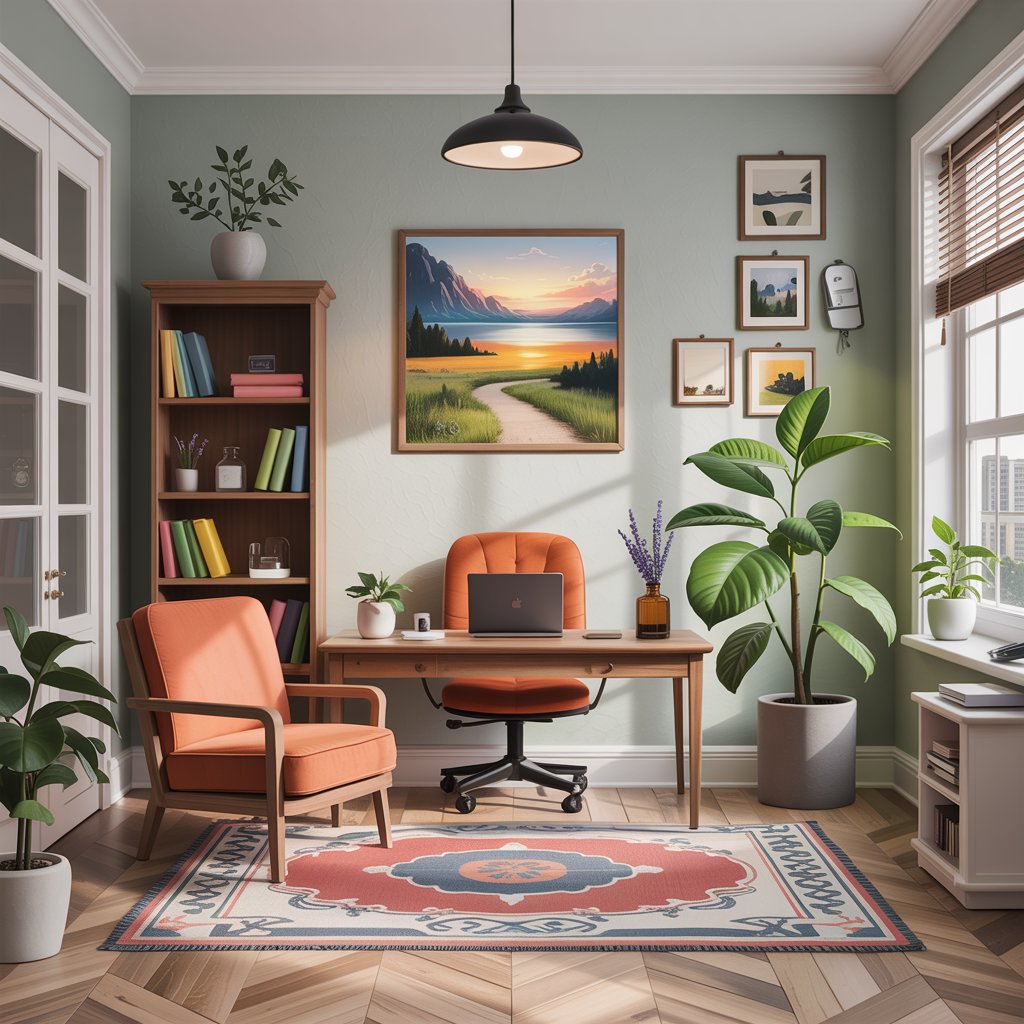
Pro Tip: Place diffusers behind your seating position. Airflow should carry scent toward you—not into your mic!
15. Dedicated “Inspiration Corner”: Ritual Space
Designate a small zone purely for ideation—no emails allowed. Stock it with a thrifted armchair, sketchbook, and mood-lighting lamp. This signals to your brain: “Here, we create.” As my colleague Lisa Kostyra wrote about global workspace trends, modern offices must become “dynamic ecosystems” supporting varied mental states.
Your inspiration corner is where solutions emerge. I keep mine stocked with tactile tools: bamboo pen cups, textured paper samples, even smooth river stones to fidget with during blocks. The rule? You can’t sit here while checking Slack. This sacred separation between “think” and “do” spaces prevents burnout.
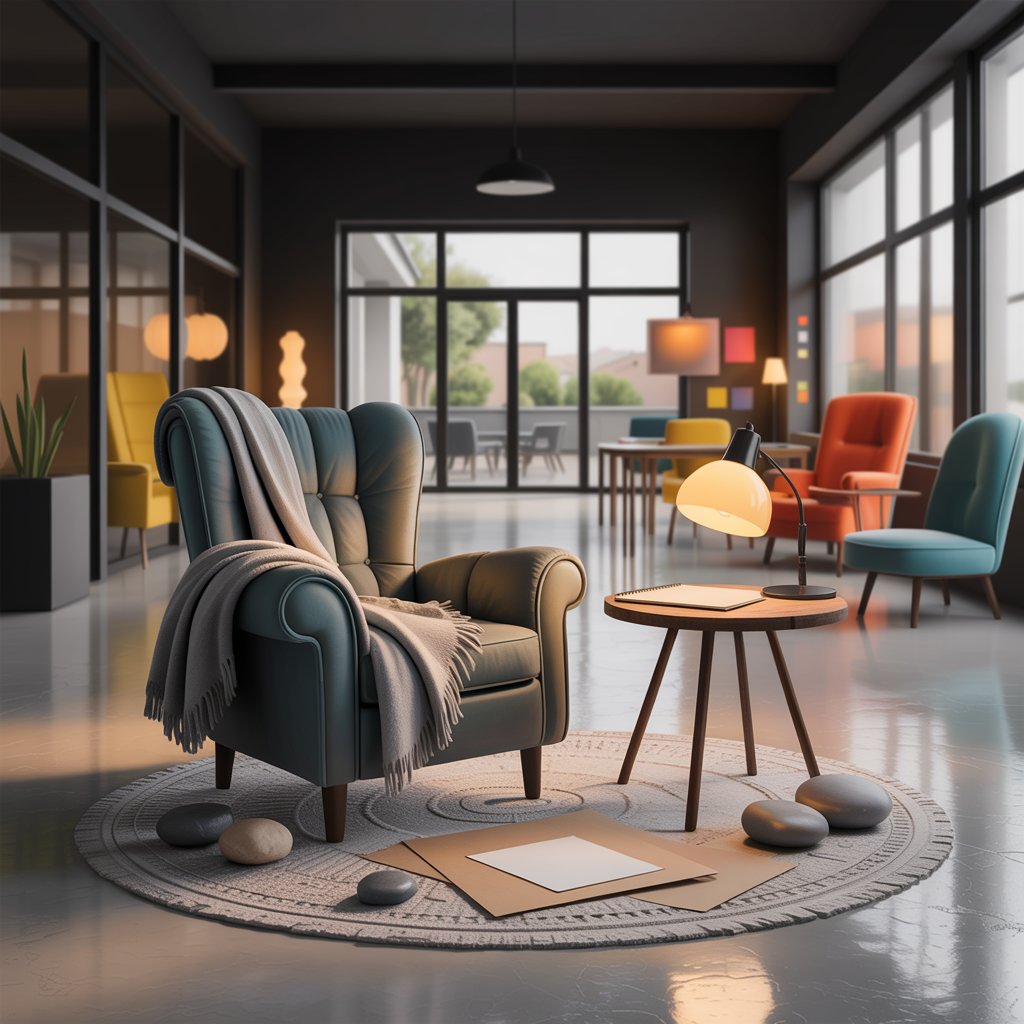
Pro Tip: Visit this corner before starting work. Five minutes of unfocused doodling primes your brain for deep flow later.
Your Transformative Workspace Awaits
Revamping your office isn’t about chasing perfection—it’s designing a responsive ecosystem where productivity and peace coexist. As we’ve seen from Milan to Minneapolis, the most effective spaces blend ergonomic intelligence with personal storytelling. Start small: pick one idea (cable management is my #1 client win!) and implement it this week. Remember, your workspace should serve you—not the other way around. In 2025’s hybrid reality, these 15 strategies turn stagnant corners into engines of both output and well-being. Now go claim your right to a workspace that doesn’t just hold your laptop, but elevates your entire workday. Because when your environment hums with intentionality, your career doesn’t just function—it flourishes.
Ready to dive deeper? Explore Pedrali’s sustainable workspace collections here, or get tech-integration hacks at Urban Drop Zone.
